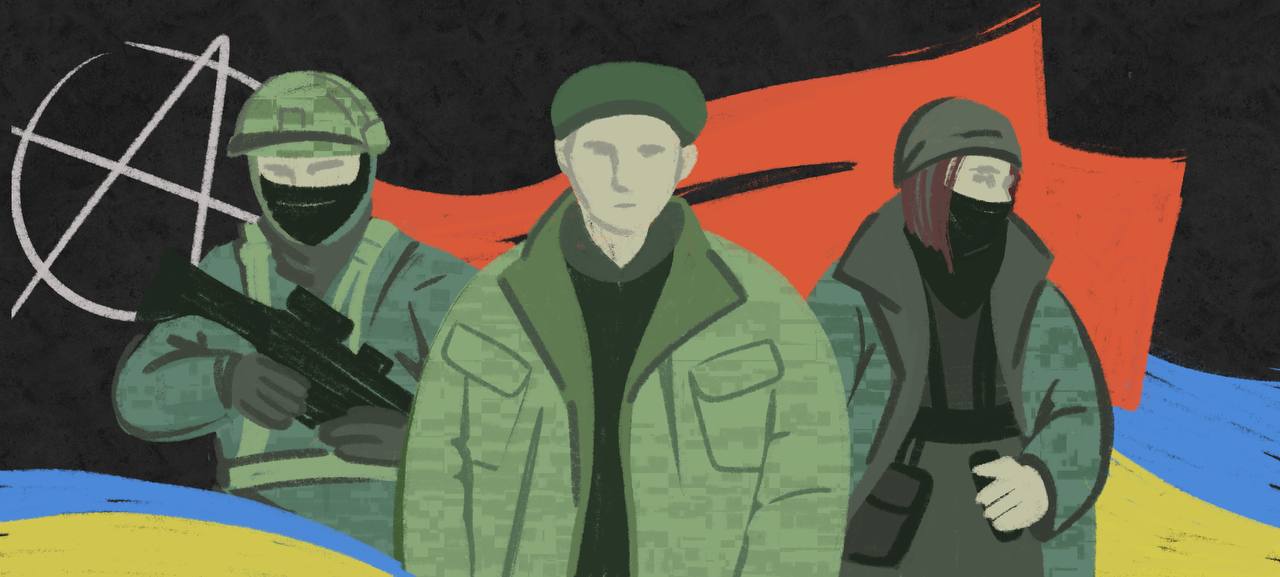A few years ago, your collection of essays Dissidenty sredi dissidentov (Dissidents among dissidents) was published. The central issue in it was the history of left-wing dissidents in the USSR. The book will be published by Verso in 2022. How did you become interested in this topic?
I found this topic interesting back at the beginning of the 2000s, during my student years at the faculty of history. Certainly, for me, it was related to my participation in the Russian left-wing movement. Quite early I arrived at the idea that there was a problem of historical continuity in that movement. This is what differentiates post-Soviet left-wing movements from left-wing movements in Western Europe, the US, and Latin America, where the continuity of the previous ideological tradition is of a seamless nature.
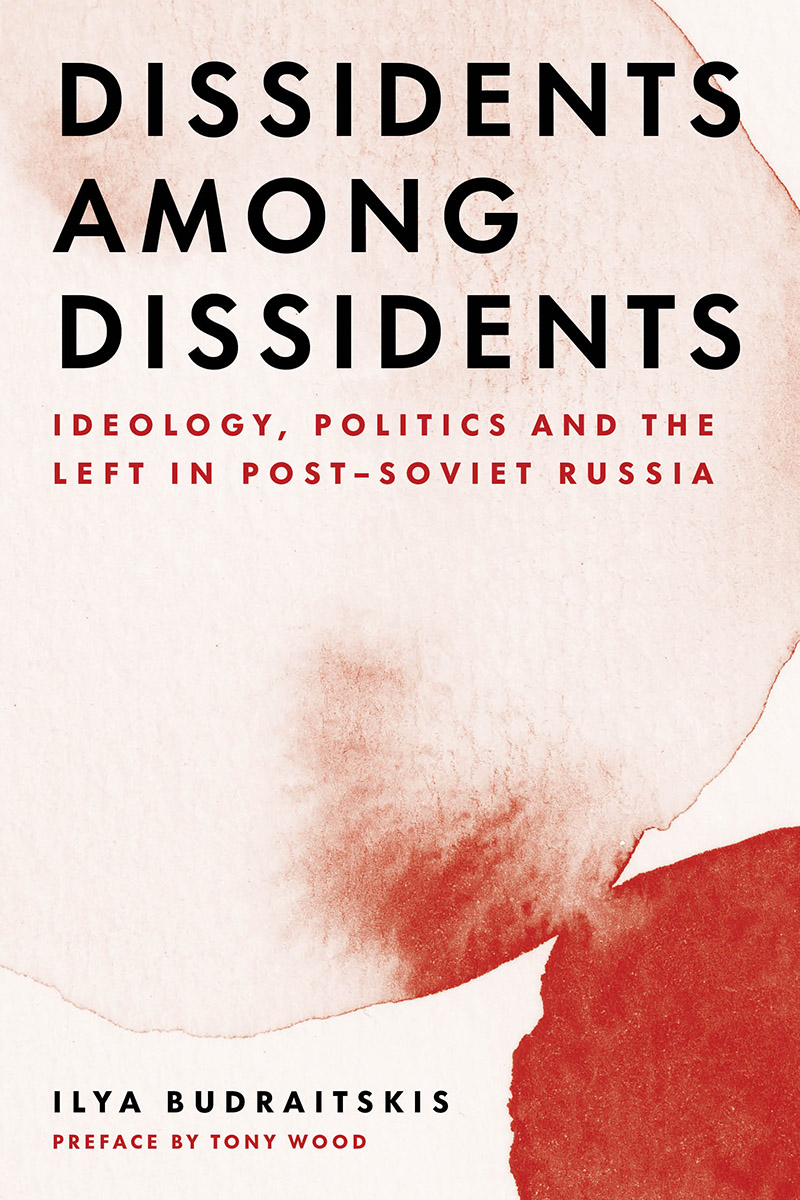
In post-Soviet Russia, we are caught in a situation that Hannah Arendt used to describe as “inheritance by no testament.” After the conflicts and debates in the Bolshevik party during the 1920s, the fatal rupture between theory and practice occurred and official Soviet Marxism could no longer be a point of reference. Nostalgic Stalinists were not able to explain the failure of the Soviet project from the standpoint of materialism without calling up conspiracy theories. At the same time, a critical review of this recent history is essential both to the past and the present of the left-wing movement.
Left-wing dissidents were the missing link who would recreate the continuity of the Russian socialist tradition. Apart from that, by analyzing the dissident-socialists of the period of the 1950s, 60s, and 70s, we could answer many of the questions connected with the failure of the Soviet project, with its inner conflicts and ruptures.
Would you outline your concept of left dissent from a historical perspective? How would you describe the key stages and issues in this tradition? You begin with the period of the Khrushchev Thaw in your book. Would you consider Trotskyist “left opposition” of the 1930s to be left dissent?
My short historical survey of the Soviet left-wing dissidents starts from the end of the 1940s when, after the war and without any mutual relations, a few anti-Stalinist socialist youth groups appear (the most famous one, probably, would be the “Youth Communist Party” in Voronezh.) At the heart of their political views, in one way or another, lay a disagreement with the official definition of the Soviet society as “socialist”; it even included an evaluation of the Soviet regime as “state capitalistic.” The left groups that appeared in the second half of the 1950s, in an intensification of the Thaw, broadly took over from this tradition of left USSR criticism by bringing forth the true social “nature” of the USSR. All of this is partly consonant with the “nature of the USSR” debate in the Trotskyist Fourth International, which unfolded on the cusp of the 1940s-1950s (where one part characterized it as “state capitalism” and the other, according to Trotsky’s own analysis, as a “degenerated workers’ state”). Nevertheless, this proximity between Trotskyism and the underground Soviet socialists was more of an intuitive one, it sprang from challenges of social reality rather than from having some common origins in terms of theory or political conventions. The works of Trotsky, as well as the inner-party disputes of the 1920s, were almost inaccessible in the USSR, and the anti-Stalinist analysis of the left-wing dissidents, first of all, rested upon an alternative interpretation of Marx and Lenin’s works (The State and Revolution, and Lenin’s late articles in particular.) Certainly, left-wing dissidents had always been interested in the history of the Party. There were some authors, who, after all, found access to the left opposition materials, and included them in their analyses (especially in the 1960s-1970s). At the same time, it is worth giving attention to the longstanding work of discrediting Trotskyism that was administered over a period of decades by official propaganda, and a prejudice towards Trotsky and his ideas remained almost subconsciously in many left-wing dissidents.
Why is it necessary to establish any tradition at all? Citing Marx: “The tradition of all dead generations weighs like a nightmare on the brains of the living.” Perhaps it is worth rejecting all the endeavors of establishing some tradition and just start constructing everything from scratch?
Marx initially attributed this phrase from The Eighteenth Brumaire of Louis Bonaparte to the endeavors of new generations to copy the examples of the past. Obviously, my interest in the left-wing dissidents is not of a reconstructive nature. Their experience is neither possible nor necessary to reproduce, just like there is no need to consider Bolshevism from the beginning of the 20th century as a role model. The very absence of historical continuity allows this grotesque reconstruction, I mean all these absolutely destructive present-day games and clashes of discourse of the historical Trotskyists and anarchists. I have turned to left-wing dissidents so as to avoid this fatal influence of the unreflected past on today’s world.
How do you estimate the influence of the 20th Congress of the Communist Party of the Soviet Union on the development of criticism from the left in the USSR?
Certainly, the critique of the personality cult asserted great influence over the establishment of the left-wing dissident tradition, as well as arousing public debate concerning the extent of socialist distortion that Soviet society faced during Stalin dictatorship. During these debates, many young people came to think that the official party answer, proposed at the 20th Congress, was absolutely unsatisfactory and was actually trying to evade querying true inquiry and so conceal the real scale of the purges. They assumed that the reasons for the rise of Stalinism were rooted deeper than exclusively in the peculiarities of Stalin’s personality. This attitude persisted throughout the entirety of the Khrushchev period – demands for a sounder analysis of Stalinism and a distrust of the official denunciation of the personality cult.
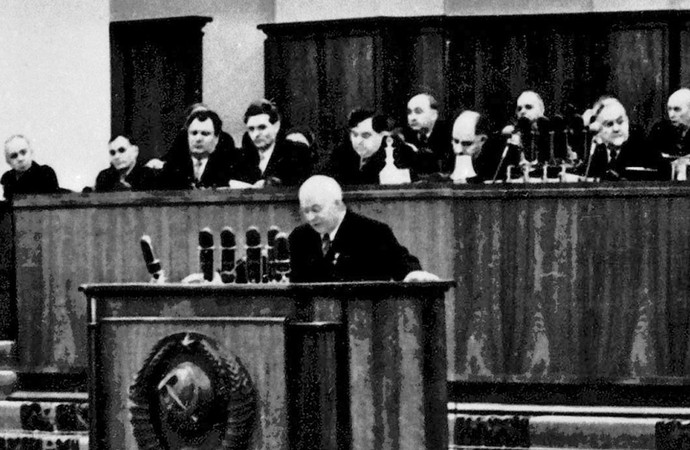
Nikita Khrushchev, the 20th Congress of the CPSU on February 14, 1956
It is worth mentioning that the speech itself was of a secret nature and that during the first years it was distributed off the record, in a samizdat fashion [self-published, underground texts – translator’s note]. Besides, Khrushchev and his associates did not have the public image of being critics of Stalinism who systematically broke with Stalin’s legacy. As a rule then, the members of left-wing underground groups of this period were not well disposed towards Khrushchev. Generally, these groups were anti-Khrushchev in nature and were exposed to reprisals because of it.
Moreover, we can recall a few remarkable examples from the early history of the dissident movement when addresses against Khrushchev were almost sympathetic towards his Stalinist opponents from the “antiparty group” of Molotov-Malenkov. For instance, such a subtext was noticeable in the famous speech of Petro Hryhorenko at the regional party conference in 1961.
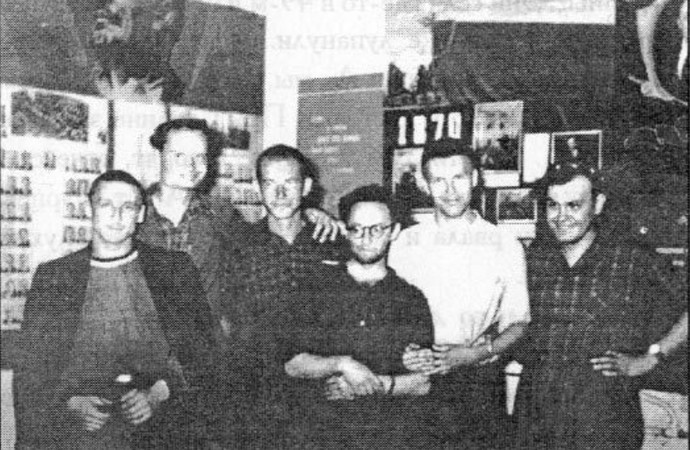
From left to right: Mark Goldman, Leonid Rendel, Lev Krasnopevtsev, Mikhail Semenenko, Nikolai Obushenkov, Nikolai Pokrovsky. Source: Mikhail Goldman Archive
During the Thaw, there were many different manifestations of public disagreement, yet it was too early to talk about a centralized dissident movement. As a rule, underground youth groups were not related to each other. Their views were quite eclectic, included diverse elements and opinions, and were often contradictory. They arose in a context of the absence of a developed alternative political culture; also, they had very little time to construct a systematic political programme. That is why it is often hard to tell which spectrum this or that group belonged to. For instance, the group of socialists from the Moscow University in the charge of Lev Krasnopevcev: some considered it to be almost pro-Stalinist, some – the other way round, as a left-wing democratic one. Both opinions can be proved by quotations or the particular stories of their members.
Why did many left-wing Sixtiers then turn in a right-oriented direction?
In the second half of the 1960s, many left-wing socialistic dissident groups experienced a change of heart. Firstly, most of these people ended up arrested or imprisoned in special “political” labor camps. There, many of them got to know one another. They sometimes took part in debates during which most of them evolved ideologically and took their previous socialist and Marxist beliefs as naïve. From such reconsiderations some very unexpected pathways were born: some of them become nationalists, orthodox Christians, or liberal rights activists; others preserved their Marxists beliefs.
The second point is related to the end of the Thaw. I think this is even more important since the hopes of many left-wing dissidents of this period were connected with the hope for reforms. By the end of 1960s, the “self-reform” anticipation suffered a defeat, firstly related to the notable criminal cases of a political nature, as in the Sinyavsky-Daniel trial, and then to the Warsaw Pact invasion of Czechoslovakia (this moment is often defined as the boundary of change between the two epochs.) Finally, there was the sacking of the Novy Mir editorial office, the main ideological leader of the Thaw, at the beginning of the 1970s.
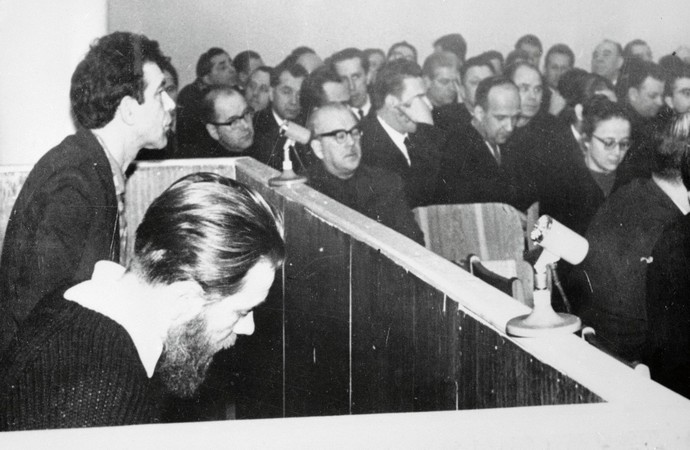
Juliy Daniel and Andrey Sinyavsky at a court hearing on February 10, 1966
All these events led to the reality that, by the beginning of the 1970s, people who believed that Soviet socialism had sound foundations and could be changed from within were already perceived within the dissident environment as being marginal. Such a marginal niche at the beginning of the 1970s was filled by Roy Medvedev, who continued to adhere to this position.
It turns out that during the Thaw left-wing dissidents thought within the framework of Soviet socialism. However, when it became obvious that it had lost its legitimacy as a system, it was possible to move from this point either to the right or to the left. Why did they mostly move to the right and not to more radical leftist positions?
The movement on either side was related to a particular political strategy, and evolution in terms of mere ideas appealed less to people. On both sides it was connected with the practical application of ideas, with the question of “what is to be done?” [probably an allusion to Nikolay Chernyshevsky’s novel “What is to be done?”, highly valued by some of the early Russian Marxists – translator’s note]. Considering that internal change in the system proved to be impossible, that underground groups did not work out, that dissidents cannot appeal to the broad masses and are very vulnerable in the face of the purges, a human rights-based strategy is born.
This turn also had a pragmatic aspect with the coming of détente, when the Soviet Union at the official level confirmed its dedication to respecting basic civil and political rights. Later the USSR signed the Declaration of Helsinki, which the human rights movement actively made appeals to. Such a public human rights-based strategy appeared effective because it could influence the actions of the government, which was afraid of a negative reaction in western public opinion. The human rights-based strategy – at least at first – was not a move to the right, but a pragmatic choice.
The political evolution that followed the choice in favor of the human rights perspective occurred later, it was rather gradual. Even in the middle of the 1970s, Alexandr Solzhenitsyn’s radical anti-communist beliefs were seen rather negatively in the human rights environment.
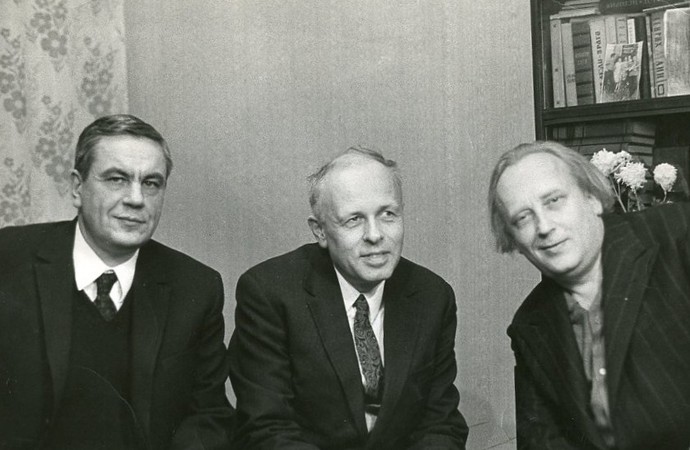
Members of the Human Rights Committee Igor Shafarevich, Andrei Sakharov, Grigory Podyapolsky, 1978
It often happened that the dissidents deliberately used the official discourse in their struggle against the system. This leads to a problem: how to separate left-wing dissidents from those who used socialist rhetoric for tactical purposes?
The first way, which can be applied here, is to have a look at the texts that circulated in the samizdat publications, where people expressed their opinions frankly and did not anticipate that they would be addressing public authorities. It is easy in this context to differentiate between those who sincerely used Marxist analysis and took it as a core mode of attitude to reality and those who thought in absolutely different terms.
There is a widespread idea that dissidents behaved towards Soviet language in an instrumental way and that their leftist declarations were just a maneuver. However, this point of view is not well-founded, as there are many texts that were not of an instrumental nature.

Typical typewritten samizdat and films with photocopies of writings
The story of dissent is often described using binary oppositions like “conformism – nonconformism” and “pro-state – anti-state.” The foreword to your collection of essays was written by an anthropologist Alexei Yurchak, known for his book Everything Was Forever, until It Was No More, where he is critical of such a mode of description. Do you consider his ideas of a “performative shift” and “living vnye” [“living outside” – translator’s note] as substantive for analyzing the history of dissidents?
I think Alexei Yurchak has written a very important book, and his approach refocuses the debate on late-Soviet society. He questioned the conventional (for instance, for western Slavonic studies) idea of “double consciousness” – that Soviet people were honest at home but lied in official circles. This position largely owes its origin to the dissidents. In particular, Solzhenitsyn’s famous essay “Not to Live in a Lie” is based on the very idea of “double consciousness.” Similar positions were held by Vaclav Havel in “The Power of the Powerless.” Yurchak’s approach is also important for a reconsideration of the historical frame of the mainstream dissidents that is still being repeated by many authors. My project concerning the left-wing dissidents is also aimed against such a frame, and that is why I feel a significant ideological proximity to Yurchak’s approach.
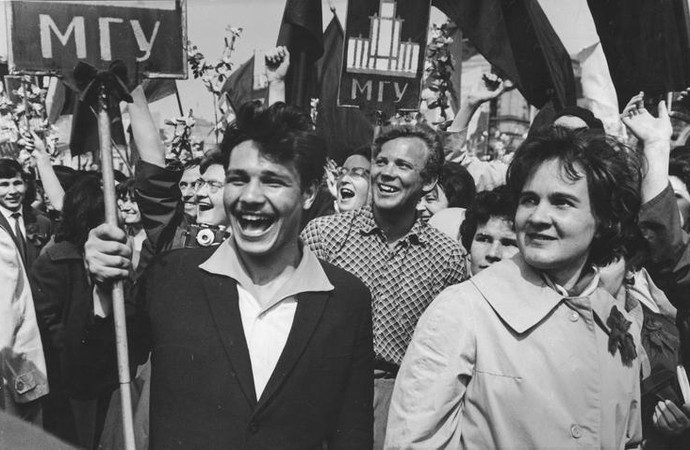
Students at the May Day demonstration, 1964. Photo: Vsevolod Tarasevich
Who were the dissidents in terms of social class? How significant was the social distance between workers and the intelligentsia, and how did it affect the dissident movement?
If we look at the members of the groups from the 1950s-1960s, then we will almost never find people from the elite; we will, however, see quite a lot of people who were former intellectuals from the first generation. A lot of them came from the countryside to the big city to study where they burrowed into new environments and discovered new ideas. That is why their attitude to these ideas was very serious; this was natural for many intellectuals of the first generation.
The underground groups of the Thaw did not reduce the social composition of the Soviet society to the simplistic dualism of the passive masses and totalitarian power. In general, the discourse of freedom was not peculiar to them as the issue of justice was more important. The shift from the Thaw to the Era of Stagnation and the rise of a human-rights-based strategy largely coincided with the shift from the subject of justice to the subject of freedom. The demand for justice, on the cusp of the 1950s-1960s, was quite high in society. This was proven by the eruption of civil riots in Novocherkassk, Murom, Kryvyi Rih, and many other cities of the USSR.
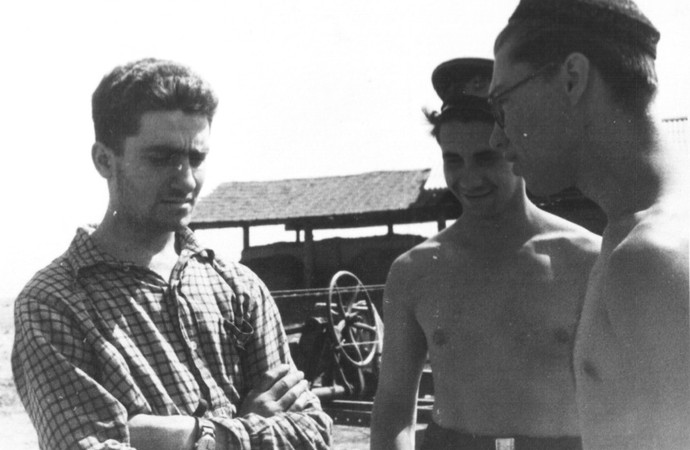
Valery Ronkin (left). Tselina, 1958
In this respect, the history of the Union of Communards group from Leningrad, which was formed in the early 1960s around two young engineers, Valery Ronkin and Sergei Hahaev, is very interesting. The backbone of this group was made up of the so-called “volunteer police brigades.” These were student organizations that, with the approval of the Komsomol and the Ministry of Internal Affairs, patrolled the neighborhoods, discos and monitored the maintenance of public order. For the members of Ronkin and Hahaev’s circle, the activists of these “brigades,” the main enemies were “stilyagi” [subculture, based on the copying of American lifestyle and jazz music] and “fartsovshchiki” [black-marketeers acquiring consumer goods and currency from foreigners – translator’s note], the spoiled children of wealthy parents who were cynical about the Soviet state. In his wonderful memoirs, Ronkin describes how the enraged feeling of social injustice that he felt when encountering the stilyagi pushed him and his friends to create an underground socialist group.
Ukrainian dissident Leonid Plyushch also mentioned in his memoirs that before becoming a dissident, he was a member of a Komsomol group that combated the stilyagi. He did not like them either.
Yes, this was a popular opinion back then, because stilyagi were taken to be cynical bourgeois subjects, who, for all their affectations of being offbeat, were actually quite conservative. It was this bourgeois conformism that revealed the discrepancy between the reality of Soviet society and the ideals that it declared.
Interestingly, in modern liberal mythology, the stilyagi are presented as “dissidents” [nonconformists, the ones who dissent – translator’s note], advocates for freedom who challenged the gray Soviet reality with their bright clothes, although it was all often the other way around.
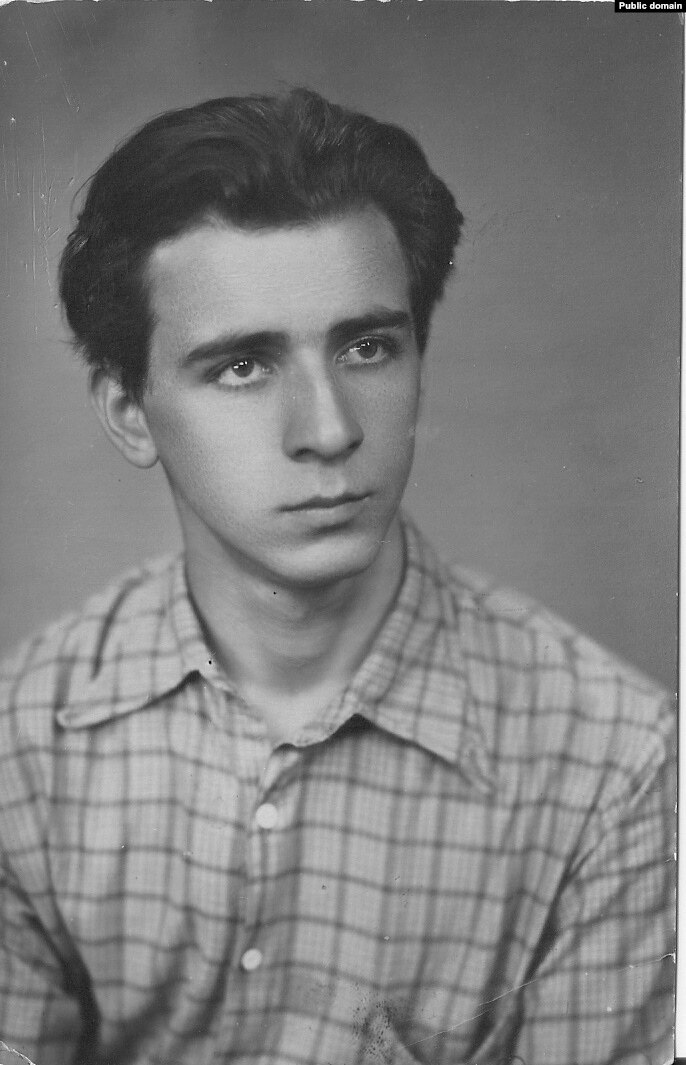
Leonid Plyushch
The stilyagi are almost the only representation of the Sixtiers in modern Russian culture. We see this in Fartsa, the television series, for example.
Yes, there is a whole sequence of similar cultural productions: TV series like Fartsa and the Optimists, the film Stilyagi, etc. A few years ago there was an exhibition at the Tretyakov Gallery dedicated to the Thaw that mostly repeated a similar mythology: the thaw is a period, related to seasonal natural changes when spring replaces winter, when one generation replaces another. The new generation is always freer at heart, more open and braver than the previous one. This account weakens the political significance of the Thaw, it makes it part of a perpetual history from which subsequent periods can be extrapolated (for example, in modern Russia, after the winter of Putinism, its own “thaw” will come, since seasonal changes are inevitable.)
I believe that such mythology depoliticizes the real Thaw that occurred on the cusp of the 1950s-1960s and raises some true problematics. Actually, the cultural motif of that time was an anxiety directed at the sense that the new generation was growing up to be cynical, total conformists. This is the key theme of all the filmmaking that occurred during the Thaw.
You mean, for instance, Marlen Khutsiev’s films?
Certainly. This is the key problematic of I Am Twenty [another title of this film is Zastava Iliycha – translator’s note] and Rain in July. Meanwhile, the pathos of the stilyagi is a retroactive idea that has little basis in the cultural heritage of the Thaw.

A shot from the film Zastava Iliycha
In the 1970s and 1980s everything changes, both liberal and conservative dissidents adopt an elitist attitude to the people. Meanwhile, Varlam Shalamov, who was an insider among the left-wing oriented dissidents, wrote, “And don’t they ‘chant’ about the people? Don’t they ‘chant’ about the peasants? I do not know what it means. Don’t swindlers and dealers chant that the intelligentsia is guilty towards someone. The people, if this term exists, owes the intelligentsia a great dept.” How much elitism was characteristic of left-wing dissidents?
I don’t think that Shalamov’s quote speaks for his elitism but is instead aimed against the idealization of the people, which was widespread among, for instance, the “pochvvenniki” [a term derived from the word “pochva” – “soil” – translator’s note] and present in some of the intelligentsia’s environments of the 1970s.
Concerning left-wing dissidents, they were left-wing mostly due to their different idea of society. They did not reduce it to the conflict between freethinking individuals and the silent people. I would say that the dissidents-socialists considered there to be two different branches of such an alternative analysis of society and the idea of their role in it.

At the factory. Photo: Vsevolod Tarasevich, 1960s
The first one is class analysis. The major works of the left-wing dissidents are primarily interesting because they tried to determine what was the true class structure of Soviet society. There was the official thesis that in the Soviet Union there were two friendly classes – the proletariat and the peasants, and also the stratum of the intelligentsia that was friendly to them. All the dissident-socialists agreed on the fact that this was an absolutely anti-Marxist absurdity. Since there are classes, then the antagonism between them would still exist, wouldn’t it? Many dissident-socialists concluded that there is a real ruling class, the nomenklatura elite, the existence of which was being concealed. Then the question arose: what kind of role in such a structure is given to the intelligentsia, which side does it take.
Some of the Marxist dissidents declared that the very invention of the intelligentsia itself as a stratum was necessary so as to conceal the existence of the bureaucracy. Where then shall we include the people who hold managerial positions? If it is impossible to include them as either workers or peasants, then there must be a place for them to fit in to. This ruling class is trying to oppress, corrupt, and win over intelligentsia, whose task is to be as one with the working class. This is an idea of Ronkin and Hahaev’s major book From Dictatorship of Bureaucracy to the Dictatorship of the Proletariat. Also, the books of A. Zimin (the pseudonym of left-wing dissident Elkon Leikin) contain some very complex criticisms of the official class structure in the USSR.
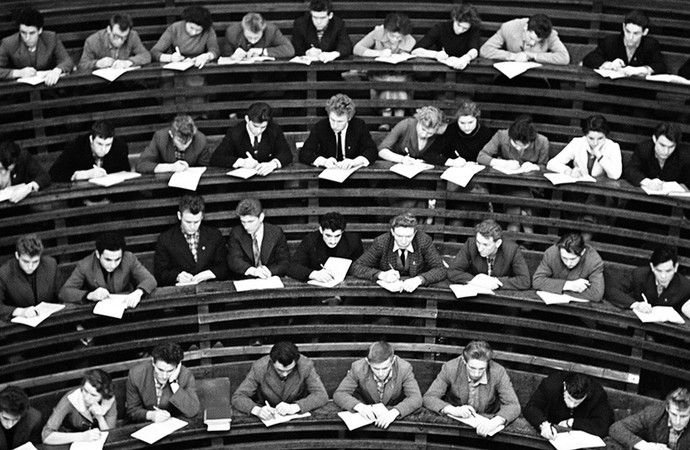
Students, 1969. Photo: Yuri Abramochkin
The second branch of the consideration on the role of the intelligentsia focused on the pre-revolutionary intelligentsia. For instance, this was a characteristic of the Leningrad group, formed at the end of the 1950s around the mathematician Revolt Pimenov. The members of this group were very interested in the populist and social-revolutionary tradition of the late 19th and early 20th century and mostly identified themselves as its successors – intellectuals-advocates for the people. This interest in the revolutionary-democratic branch of the pre-Soviet intelligentsia was rather wide. Even many authors of Novy Mir considered their journal to be a continuation of Belinskiy or Chernyshevskiy’s approach.
The very subject of the people, of the attitude to them, was characteristic during the 1970s and at the beginning of the 1980s when the separation between the nominal zapadniks [Westernizers – translator’s note] and pochvenniks was crucial to dissident society. The latter were not successors to the Russian revolutionary populists of the 19th century but represented a new variant of conservative thought, where the appeal to the people was of a specific nature. In it, the people were not an active political subject but an unstructured mass carrying deeply rooted traditions. What is important for this conception is that there are true, primal people – the concept of “the people” and, against this, there is the mass of Soviet people, deprived of their national heritage – rootless, industrialized, cut off from their rural origins. And there is a need to overcome this artificial Soviet nature in the name of a “true” one.
This conservative conception in its core idea became very important during the times of perestroika. It is hard not to notice how the idea of the rootless Homo Soveticus arises during this period. In this regard, the discourse of perestroika’s social and political journalism takes over from the conservative samizdat of the 1970s. It is enough to open the major anthology Inogo Ne Dano (There Is No Other Way), to which almost all the notable perestroika journalists took a part, to see that the theme of the true and the untrue “people” is revealed in almost every other article.
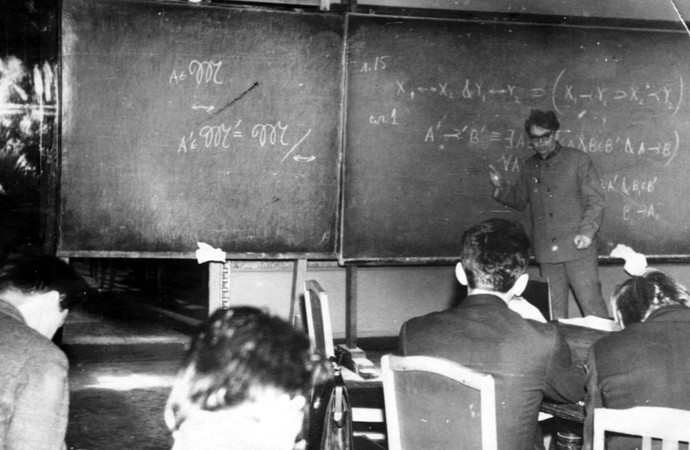
Revolt Pimenov, the mathematician
What were the differences between the left dissidents and the liberal ones, with their human rights discourse? Can you describe the controversy between Roy Medvedev and Alexander Solzhenitsyn in the context of late socialism?
The problem of human rights became central for the Soviet dissidents of the second half of the 1960s, while the political differences took a back seat. This was typical for those with left-wing views; thus, one of the founders of the human rights movement in the USSR was Petrо Hryhorenko, who, at least until the beginning of the 1970s, still considered himself a communist. The turn to human rights activism was related to the disappointment of many of the left-wing dissidents in the various political strategies that they tried such as creating underground groups or attempting to influence the “progressive” elements of the party bureaucracy. For a major part of the former left-wing dissidents, this reorientation to human rights was indeed the step toward a gradual shift of their political views to the right. While in the 1960s an approach of “democratic socialism” (or at least a convergence of socialism and capitalism) was more or less shared by the vast majority of the dissidents, in the 1970s this turned toward an openly anti-communist position. An exceptionally important role in this turn to the right was played, certainly, by Solzhenitsyn with his extremely conservative views. In the 1970s, these views represented the most radical and constant opposition to the Soviet regime while the “democratic socialism” of Medvedev, on the other hand, looked like a variation of conformism.
This sends us back to the debate between the zapadniki [Westernizers] and the Slavophiles during the 19th century. The latter held a similar idea regarding the people.
Yes, certainly, the Slavophilia influence persists here. Yet, for the Westernizers and Slavophiles of the 19th century, one of the crucial moments was the attitude of the state towards the people. The Slavophile idea lay in the idea that the state is the modernist machinery of an exterior violence that invades the people’s life and tries to deform it in an artificial way. From the Westernizers’ point of view, the state is the engine of progress that civilizes the mob and puts it on the road to progress. That is why, despite the conflicts over the nature of the current state, it in general plays a positive role.
In the case of Solzhenitsyn, this conservative-Slavophile direction is obvious: the Soviet Union is a repressive evil, the influence of which needs to be gotten rid of. We need to return to our roots to acquire organic unity with the people in a reborn Russian Empire or a true Russian national state.

Collective farm choir rehearsal, 1960s. Photo: Sergey Vasin
As regards the Westernizers, for them, the state in the Soviet reality was neither an ally nor a proponent of historic progress. The place of historic consciousness was gradually occupied by the West, the international community, the UN, and global power brokers, all of which provided a pathway for progress into the dark and passive reality. But the evolution of thinking in this direction went quite slowly. In the 1970s there were few people, even among the liberal human rights activists, who reflected on this so directly.
In the 19th century, the emergence of socialist thought in the Russian Empire and the destruction of the Slavophiles’ monopoly on the peasant community by Herzen removed the dichotomy of Westernizers and Slavophiles to some extent. Where, in the USSR, do the left-wing dissidents stand in this discussion?
When the conversation becomes focused on the topic of “the true people” or the image of the West as a universal rights defender, then it is hard for the left-wing representatives to take part in the debate. The leftists during this period tried to shift the focus of the debate from large transhistorical topics to an analysis of the actual social dynamics playing out in the Soviet Union.
How did the events in the Eastern Bloc affect the left-wing dissidents in the USSR?
A lot of leftist students’ groups in the USSR got their start with the protests against the Soviet invasion of Hungary in 1956. They knew that the workers’ councils played an important role there, and from the point of view of many this uprising was of a class and anti-bureaucratic character.
Also, in the second half of the 1950s, Yugoslavia and Poland were of great importance. At the end of the 1950s, the foundations of an alternative Yugoslav model were formed. This is the time when the articles by Edward Kardel and other leaders of the Yugoslav regime appear. They touched upon the questions of what socialist self-government is, how to build a socialist society differently. This period coincides with the renewal of diplomatic relations between the USSR and Yugoslavia – Yugoslav publications started to be sold at Soviet newsstands. Some of the members of the dissident groups of that period have said that they almost purposely learnt the Serbian language so they could read Borba newspaper, whose content was rather different from the official Soviet newspapers.

Borba newspaper, May 4, 1980
In Poland, in the autumn of 1956, the so-called Polish October begins, when Vladislav Gomulka returns to power. The political changes happening there in public life were of a much deeper character than the changes in the Soviet Union after the 20th Congress. There were elements of an independent press, legal discussion clubs, and the well-known media outlet Po Prostu appeared. The connections with Polish groups had a rather significant intellectual impact on the same Krasnopevcev circle at Moscow State University.
As for Solidarnosc, it represented another model: from below, a powerful labor movement is emerging, which is actively supported by the intelligentsia. This option was also of great interest to Soviet dissidents, but in a different historical situation – at the cusp of the 1970s-1980s. For example, the magazine Poiski (in which Mihail Gefter, Petr Abovin-Egides, and Gleb Pavlovsky participated) published translated articles by the ideologists of Solidarnosc. But they were interested in their experience more from the point of view of how it would be possible in the USSR.
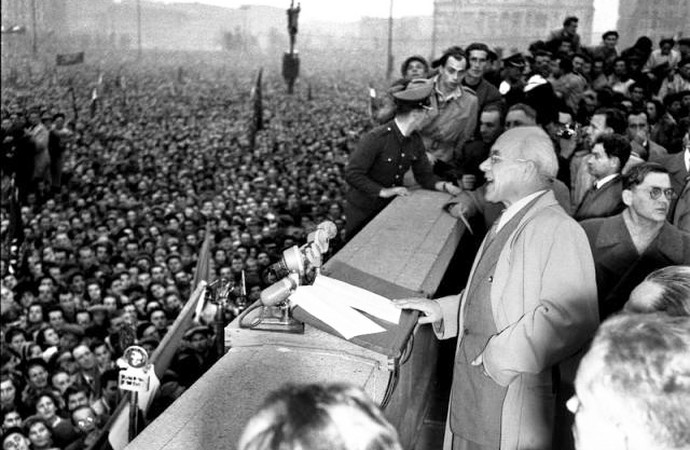
Vladislav Gomulka speaks at a rally on October 24 , 1956
The instance of Solidarnosc was impressive and was greatly influential. Yet, unfortunately, this influence could not lead to something similar in scale under the conditions of the late USSR. There were failed attempts to create some analogues of Solidarnosc. For instance, the Free Interprofessional Association of Workers (SMOT). This organization was rather anti-communist, it is hard to call it a leftist one; one of the SMOT’s leaders was Valeria Novodvorskaya. On the other hand, she tried to present herself as a defender of the workers’ interests. As SMOT’s aim was the struggle against the regime, an
d the self-organization of workers acted as a tool, the number of workers who were ready for such a struggle was very small.
Commons [Spilne – title in Ukrainian – translator’s note] once published an interview with Oleg Dubrovskiy, a leftist worker activist from the city of Dnipro [Dniprovetrovsk – the previous name of the city – translator’s note]. He always insisted that his activism was inspired by the example of Solidarnosc. Before that, he had read the discussions of the 1920s and was interested in the Workers’ Opposition, but did not go any further. After Solidarnosc, he began trying to organize something at his factory and was engaged in labor activism until the end of the 1990s. But when we spoke to him, he appeared to be distanced from the dissidents. He is a worker, and they are intellectuals. How common was this?
It seems that what you have described was a kind of a reaction to the situation of the early 1980s, when, firstly, the dissident movement stopped existing due to the purposeful KGB suppression of it, and, secondly, the very concept of “dissident” had a certain reputation. Dissidents were those about whom Radio Liberty spoke and who constituted a very small circle of activists that conducted public activities and distributed samizdat. By various estimates, this circle included several hundred people around the USSR. Nevertheless, millions of Soviet people knew about the existence of dissidents, but only thanks to Western radio stations.
The emergence of initiatives in the working environment, including political ones, is generally a very big topic. In my book, there is a short chapter about an interesting group formed in Samara in the early 1980s around Aleksey Razlackiy. It was later called the Party of the Dictatorship of the Proletariat. This group focused exclusively on the industrial working class and was involved in organizing at least one major strike. The members of this group did not see themselves as dissidents and considered themselves completely separately from the dissident movement. They listened to Chinese radio, where the Soviet Union was criticized from the left. Partly under the influence of this criticism, they created an original theory that in its practical implementation, paradoxically, could come close to the conclusions of Solidarnosc.
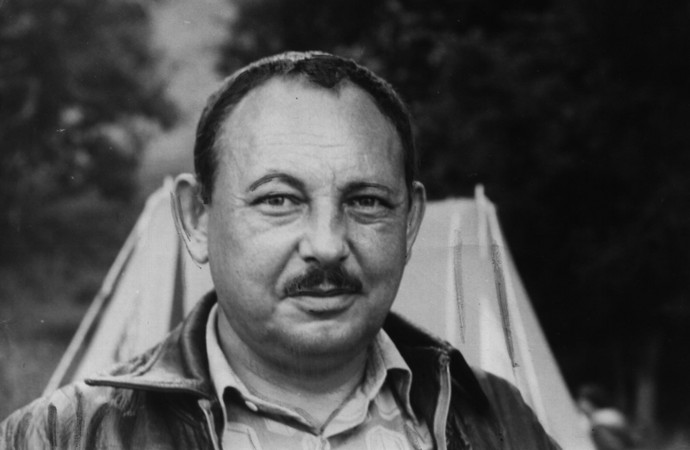
Alexey Razlatsky
Poland was an example that showed that the workers were not just part of the passive masses. In Solidarnosc, there was a left wing, represented by Jacek Kuron and the others. Why did the influence of Solidarnosc not provoke a left turn among the dissidents? You mentioned Novodvorskaya, but we know who she eventually became. Why were there no more examples of Dubrovskiy, who was and remained a leftist?
We must realize how the Soviet people could get information about Solidarnosc: besides the Soviet media, they could get it from the Western radio broadcasts, where nobody went into particulars of Kuron’s or Modzelewski’s positions. I doubt that anybody spread the word that there was a left wing in Solidarnosc. It was said that this was an anti-communist movement that fought for the dignity of workers, and that the USA trade unions and the entire free world sent them friendly greetings. In order to get a more accurate idea of the situation there, it was necessary to have access to closed and marginal sources of information.
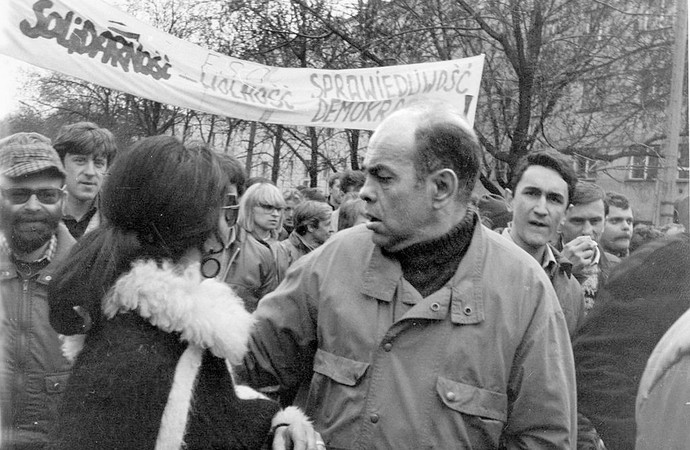
Jacek Kuron at the May Day demonstration, 1989
Were the left dissidents familiar with the political, social, and economic concepts of the Prague Spring? I mean “socialist democracy” as expressed in the Action Program of the Communist Party of Czechoslovakia and the Law on Socialist Enterprise that would have established workers’ councils practically in the whole of the Czechoslovakian economic system?
The Prague Spring was a model of how the reform could begin within the framework of “real socialism”: men of education and principle lead the Communist Party, the leadership is renewed, the old conformists with the Stalinist background leave, then censorship is canceled and a broad discussion of the renewal of socialism begins. Certainly, the Soviet invasion and the defeat of the Communist Party of Czechoslovakia had a devastating effect on the idea of “self-reform” within the Soviet system.
All that happened in Czechoslovakia during 1968 at the center of attention for Soviet dissidents, who were well aware of such fundamental documents towards understanding these events as the “Action Programme” or “Two Thousand Words” by [Ludvík] Vaculík.
It can be said that their ideas were shared by most of the Soviet human rights community, whose anti-communist and pro-market elements were extremely insignificant in 1968. It is worth remembering that in the first half of 1968, Andrei Sakharov wrote his first major work, Reflections on Progress, Peaceful Coexistence, and Intellectual Freedom, which, by his own admission, was inspired by the reforms in Czechoslovakia. It is also worth remembering that the editorial office of the journal Problems of Peace and Socialism was in Prague, which was considered one of the main “nests” of reform-oriented Soviet intellectuals.
Were there any connections between Soviet left-wing dissidents and Western leftists? How did the Soviet left-wing dissidents learn about the ongoing debates in the left environment abroad?
The Western leftists also varied. We can divide the people interested in the Soviet left-wing dissidents into two groups: those who were, let’s say, directed toward the “right” by the communist, pro-Moscow parties such as the Eurocommunists and social democrats, and those who were on the left, such as the Trotskyists and anarchists.
First of all, this interest was expressed in the fact that the publication of literature, the so-called tamizdat [“tam” – “there” – translator’s note], was partly carried out by Western leftists. Among the social democrats, we can distinguish the Herzen Foundation in Amsterdam, which was created by Dutch social democrats who sympathized with the dissident movement in the USSR. They published many important books such as, for example, a selection from Roy Medvedev's Political Diary.
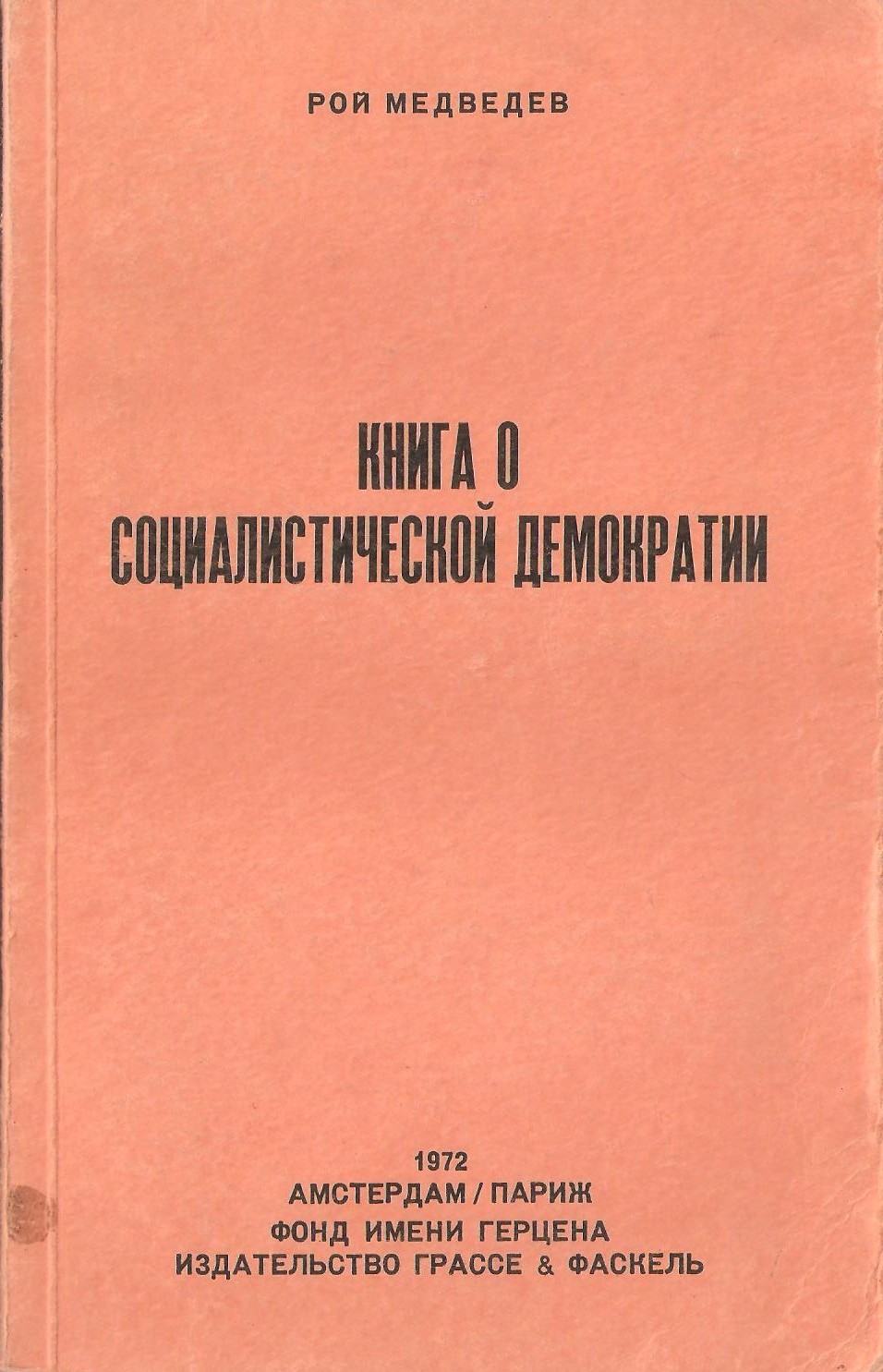
Roy Medvedev's Political Diary
On the left, publishing was also carried out by Trotskyists. Thus, in Paris, there was a publishing house named “Slovo” that was associated with the Revolutionary Communist League – they published many books, including the aforementioned Zimin. Also, there was an interest in dissidents who emigrated from the USSR and had a reputation for being leftists. In particular, this concerned Petro Hryhorenko, Leonid Plyushch, and Boris Weil. Extremist leftists in the West tried to reach out to them and engage in a discussion. For example, the well-known Ukrainian Marxist magazine Diyalog, published in Canada, printed a long interview with Plyushch. But this did not lead to any sort of ideological evolution on the part of Hryhorenko or Plyushch since by that time they adhered to a human rights strategy, and their political views had already shifted to the right. Now in the West, they expected to find more serious allies than the Trotskyist groups.
Apart from that, a few of the Western Trotskyists visited the USSR in the 1970s-1980s trying to build bridges here. They sometimes succeeded in collecting information, getting some samizdat manuscript, and taking it to the West. In this sense, for Western leftists, the USSR was a much more closed territory than were Poland, Yugoslavia, or Czechoslovakia. For instance, Ernest Mandel could visit Warsaw during Soviet times and give a public lecture (certainly not as a representative of the 4th International, but as a representative of the left wing of the Belgian trade unions). As regards Czechoslovakia, before the Soviet invasion there were no obstacles to going there. For instance, Rudi Dutschke, the famous leader of the West German radical leftists, visited Prague and gave a speech in front of a huge youth audience. In the 1960s in Yugoslavia, there was a summer school under the auspices of Praxis magazine that attracted many Western leftist theorists, who also gave speeches.

Ernest Mandel in 1970
In the article on the Cold War, you write about the impossibility of “a third position” as a result of which “any form of opposition to ‘real socialism’ turned out to be identical to the conscious choice of an alternative offered by the opposite side – the West.” But did the left-wing dissidents manage to form a “third position?” Can they be compared to the Trotskyist tradition of third camp socialism in the West?
I have to make some qualifications here. First of all, western Trotskyists generally did not consider themselves as a “third camp.” That was the name of those western leftists who considered the USSR to be an exploitative society, a form of state capitalism, and so on and so forth, and did not see any conceptual difference between the USSR and the Western bloc. For most Trotskyists that difference existed, which, certainly, did not mean that they blindly supported the Soviet government. As for the left-wing dissidents, in the 1950s and 1960s they thought that historical progress was mainly on the side of the USSR, but it did not mean that the Soviet Union was right in everything.
You write that for those Western leftists who adopted the pro-Western position in the Cold War, the possibility of inside criticism “turns into the source of power and competitive advantage.” To what extent can we admit the contrary in the USSR – that the pro-Western position did provide some protection, but at the same time isolated them from society?
The dissidents who were human rights activists during the 1970s did not consider their position as pro-Western – they considered it to be just humanistic and universal. Inasmuch as the West was upholding these principles more consistently, it seemed as though it were the only ally. Also, this situation of the human rights movement was typical for the period of détente between the USSR and the West, when the main issue was to avoid a conflict that could lead to nuclear war. For instance, Andrei Sakharov in Thoughts on Progress, Peaceful Coexistence, and Intellectual Freedom focuses not on the question of which social regime would be ideal, but on how to avoid the danger of a global war. As a person who realized the destructive nature of the bomb, he tried to infer from it a pragmatic project, where the existential interests of humanity would come first and the political or ideological wars second. This goal was quite widespread among some parts of the human rights community.
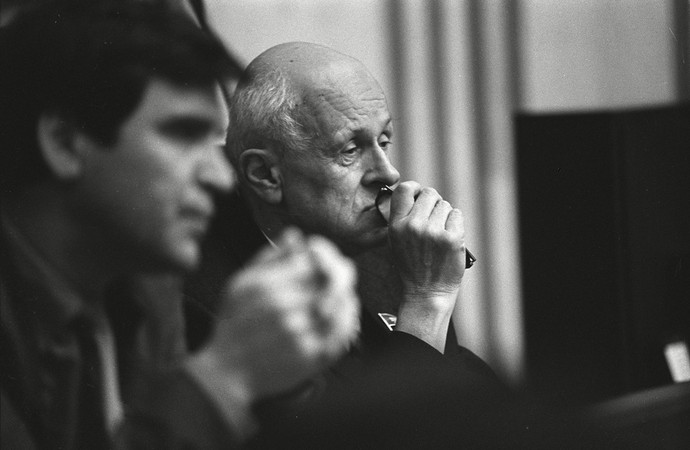
I Съезд народных депутатов СССР. Академик Андрей Сахаров, 1989 год. Фото: Юрий Инякин
How did left-wing dissidents react to the political war during the time of perestroika?
By the time perestroika began, the dissident movement was in a state of political and organizational defeat, so we can only talk about the position of its representatives. In the late 1980s, only a small number of dissidents could establish their political positions. Sakharov is rather an exception to the rule. In general, dissidents – right, left, and liberals – do not have a serious political influence on post-Soviet reality. However, their ideological influence – primarily of the liberal and right-wing dissidents – is beyond doubt. It can even be said that the post-Soviet official discourse was largely indebted to the combination of elements of the liberal and right-conservative tendencies within the dissident movement.
The main body of people who were dissidents-socialists during the Soviet times was not related to the leftist politics of the post-Soviet times. Some members of the leftist groups of the late 1950s – such as Mikhail Molostvov or Viktor Sheinis – became, in the 1990s, famous leaders of the liberal camp. On the other hand, some representatives of the last generation of dissidents-socialists, such as Boris Kagarlicky or Pavel Kydukin, played an important role on the Russian left. However, these rare instances rather confirmed the common rule: for modern post-Soviet leftists the question of historical continuity remains a serious problem.
Is there a common point of reference for the Russian left presently? Is it the socialist revolution of 1917?
Unfortunately, Russian leftists are very polarized today: while one part might relate itself to the October heritage, following left criticism of the Soviet regime, left opposition, and looking up to dissidents-socialists, the other sees the Russian revolution as being only a prelude to the Stalinist USSR, which remains for it an ideal. My research, dedicated to the left-wing dissidents, is definitely a part of this ideological fight for the heritage of 1917.
You write in your book that Putin’s ideological constellation is anti-revolutionary because of the spectre of a Russian “colour revolution.” Is this type of revolution a model for a part of the Russian left?
I think that the “colour revolution” is a dangerous but influential construct, created and heavily used by the ruling elites (both in the West and in Russia), that needs to be criticized from a leftist point of view. The term “colour revolution” means, first of all, that the post-Soviet or Arab mass protests bear nothing unique, and all of them are organized from above according to the same standard. It also means that their programme is the same anytime and anywhere – a “regime change” that is restricted to political schemes and that does not suggest any fundamental social changes. This perspective – technological and conspiratorial – defames the very term of a revolution, and the task of the modern leftists is to also struggle for the idea of a revolution.
Interviewed by Taras Bilous and Roman Huba
The questions were prepared in consultation with Stas Sergienko and Viacheslav Tsyba
Additional questions from the Czech perspective were asked by Michael Hauser
Translated into English by Yuliia Kulish for Contradictions: A Journal for Critical Thought


